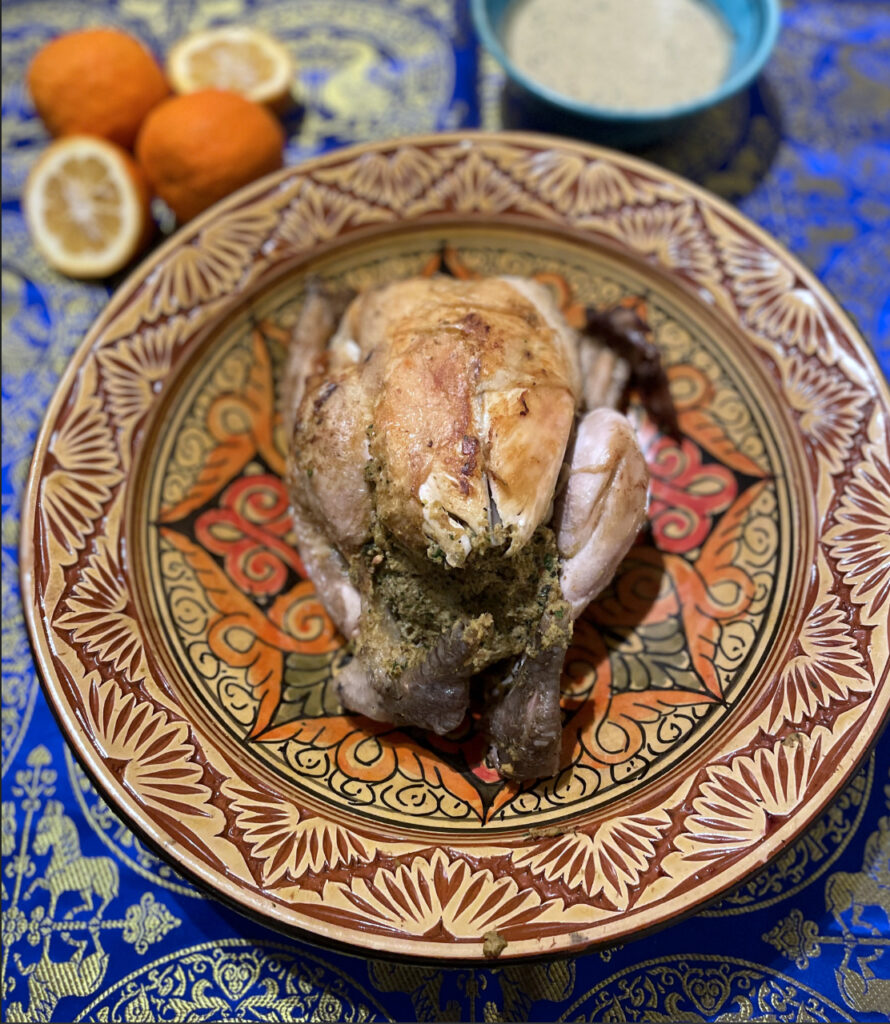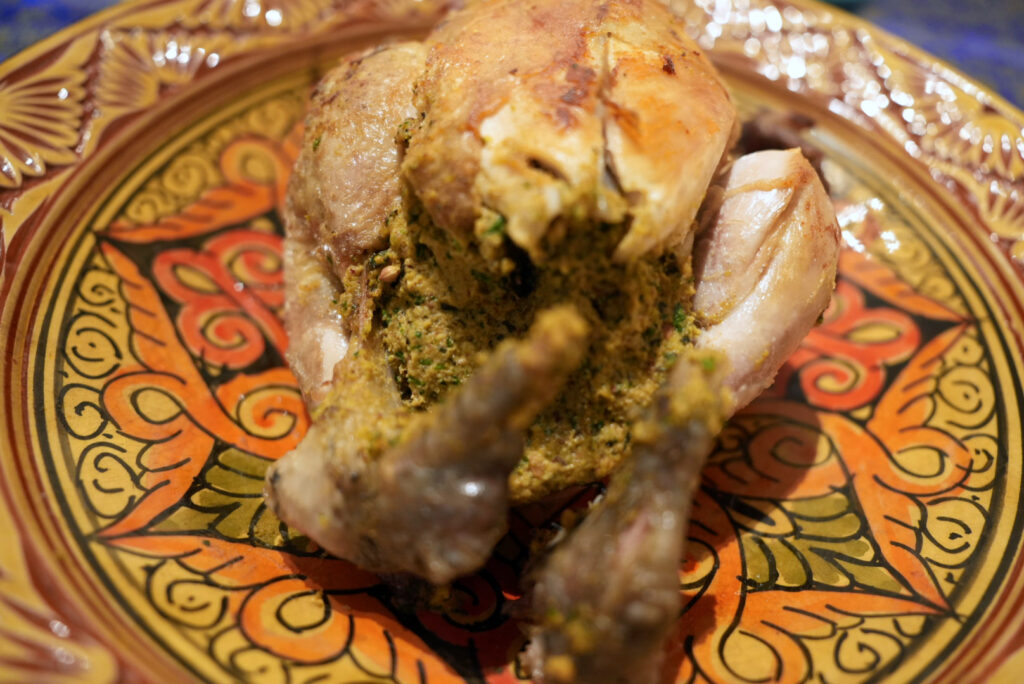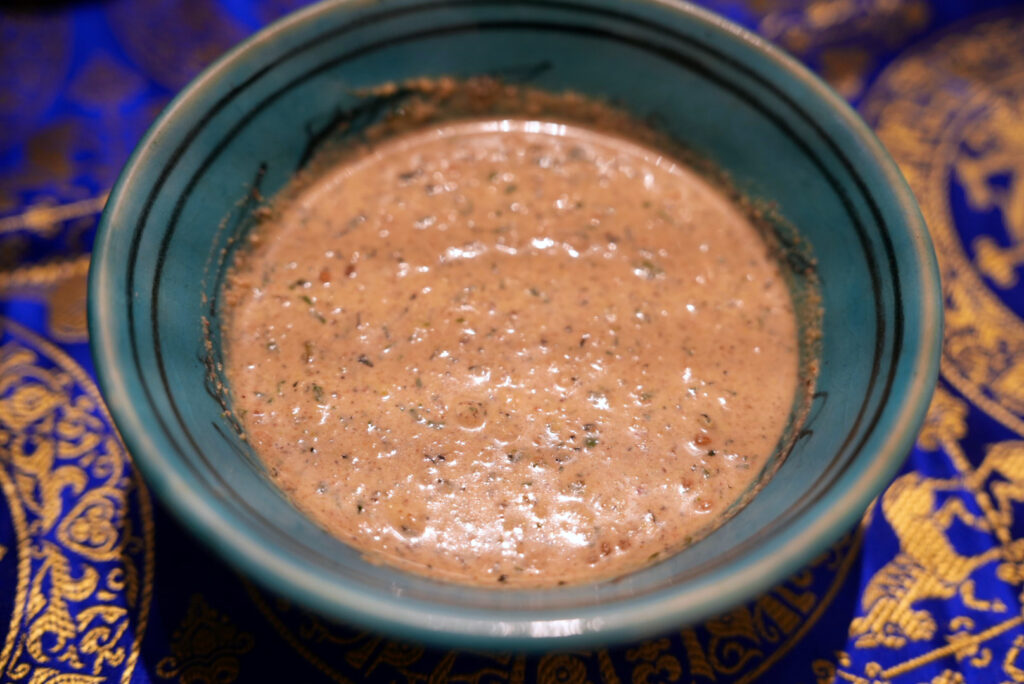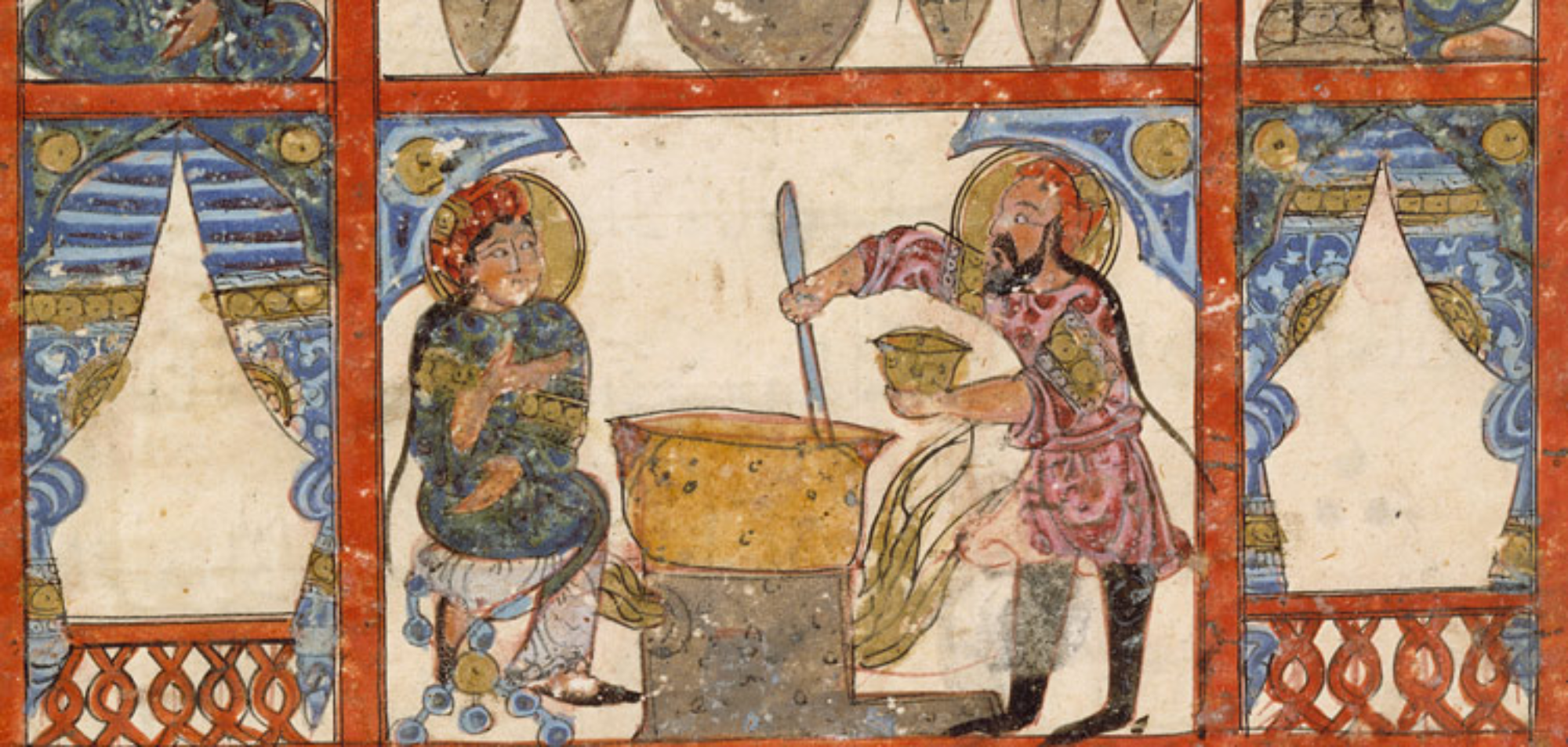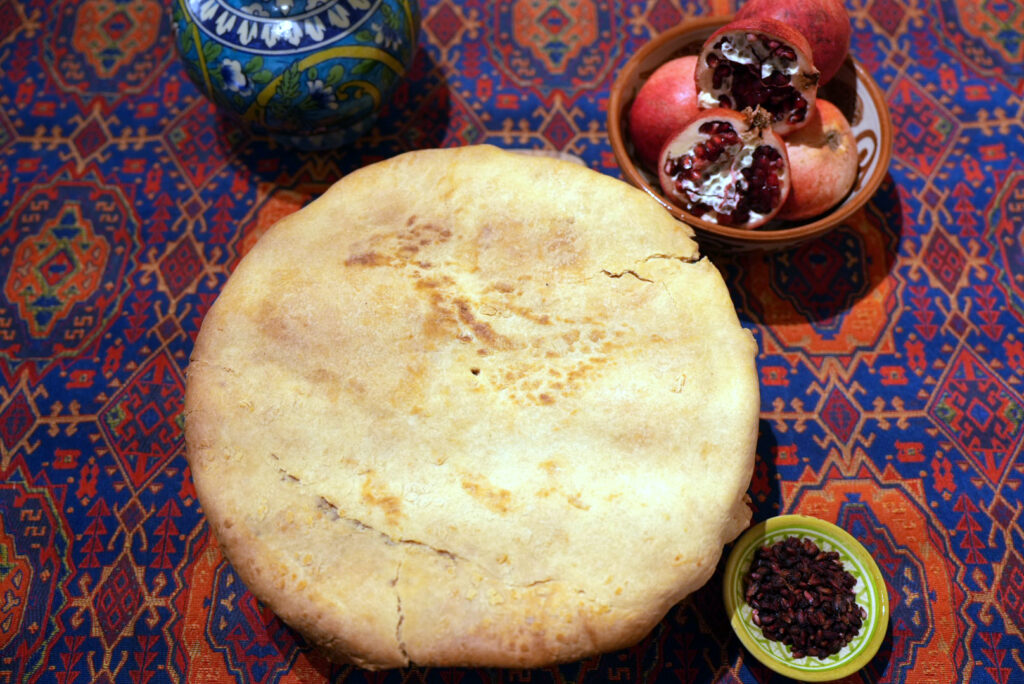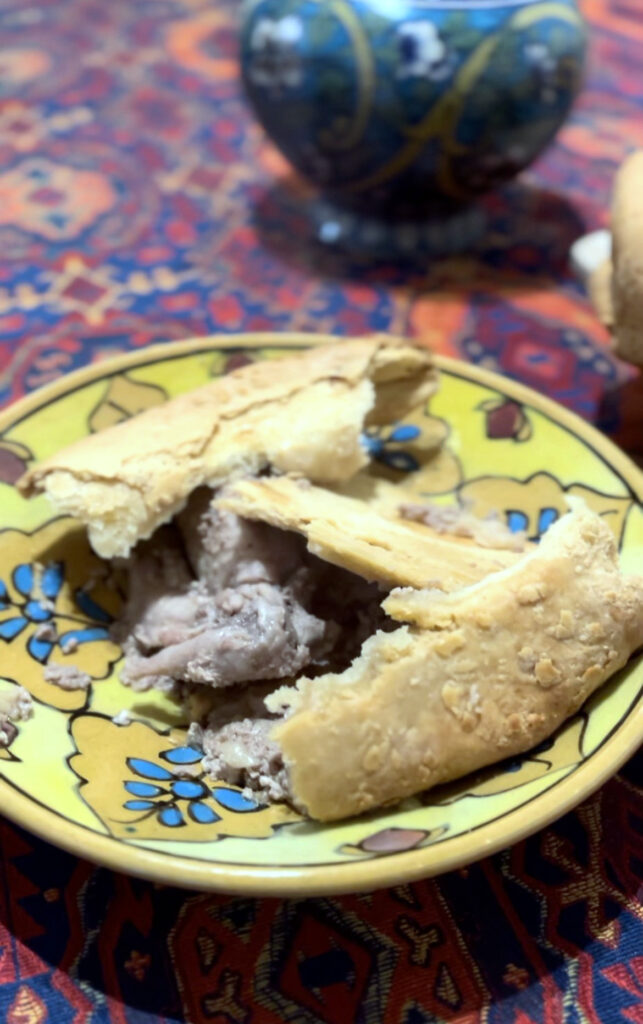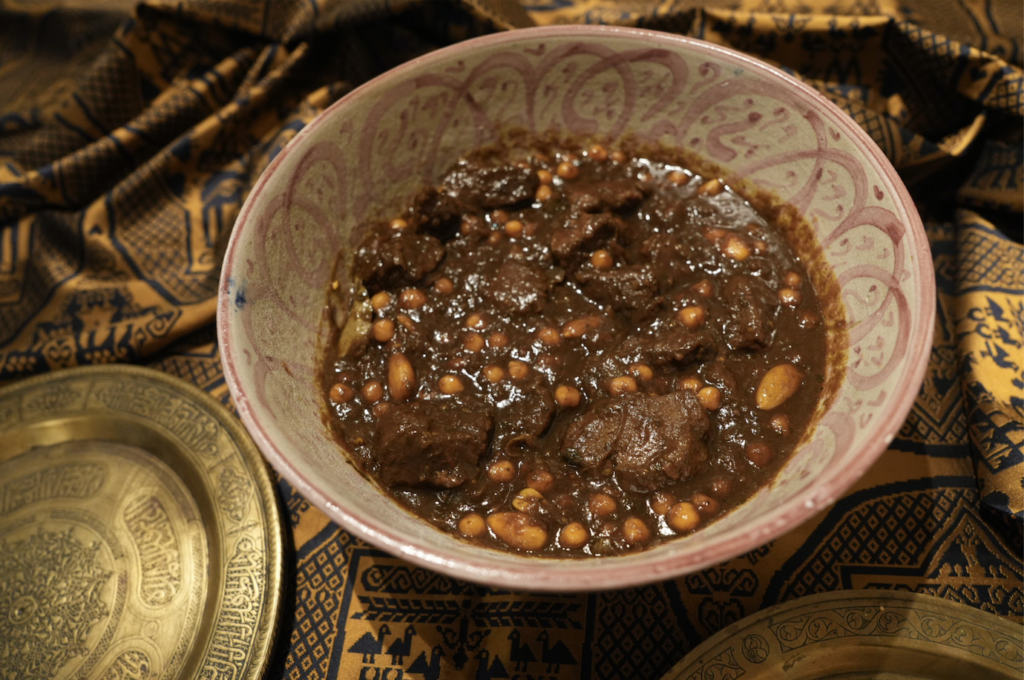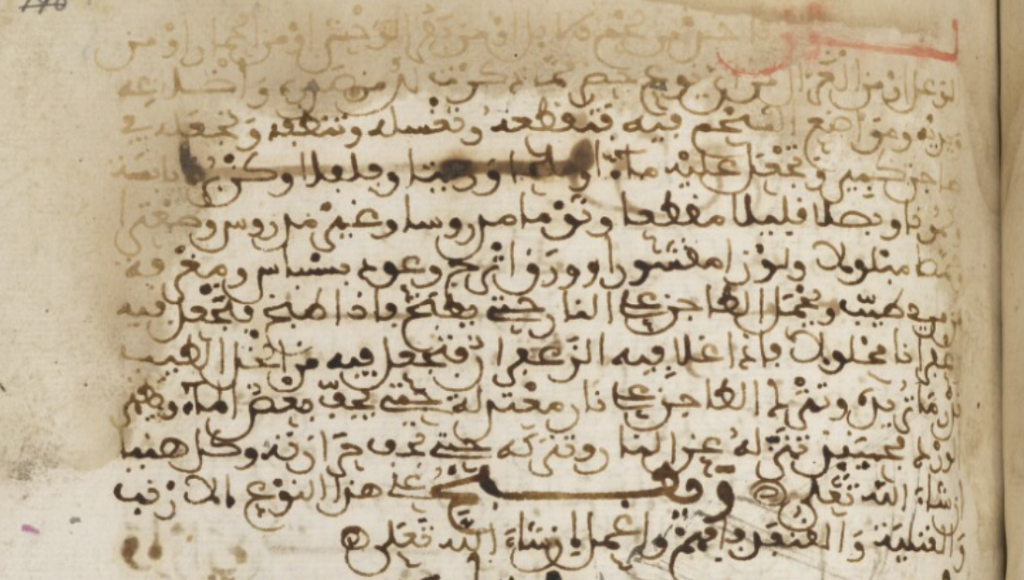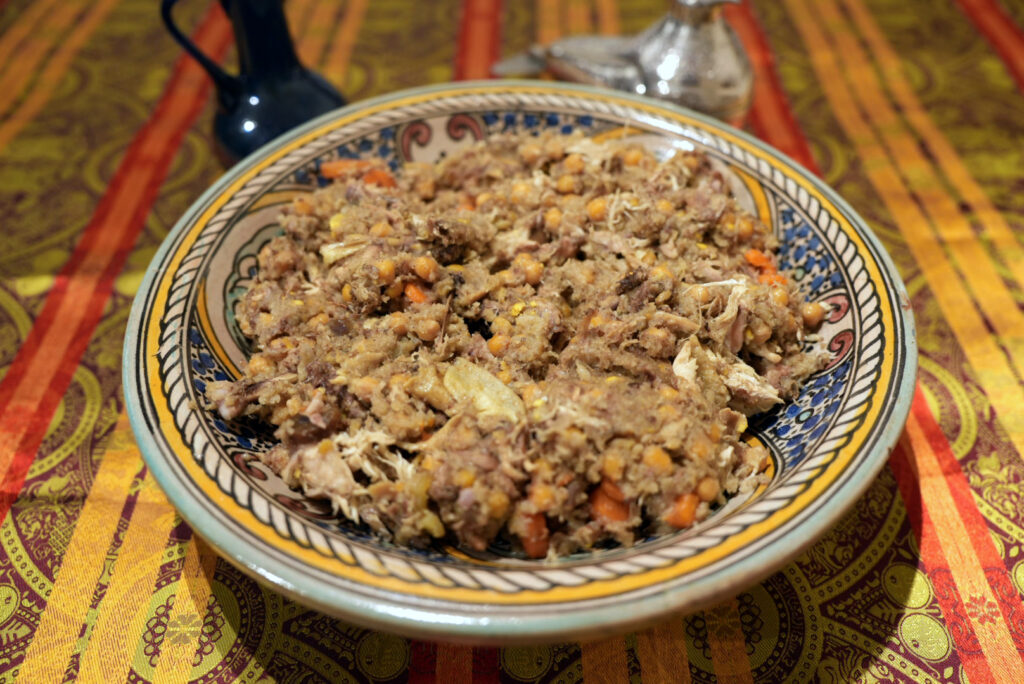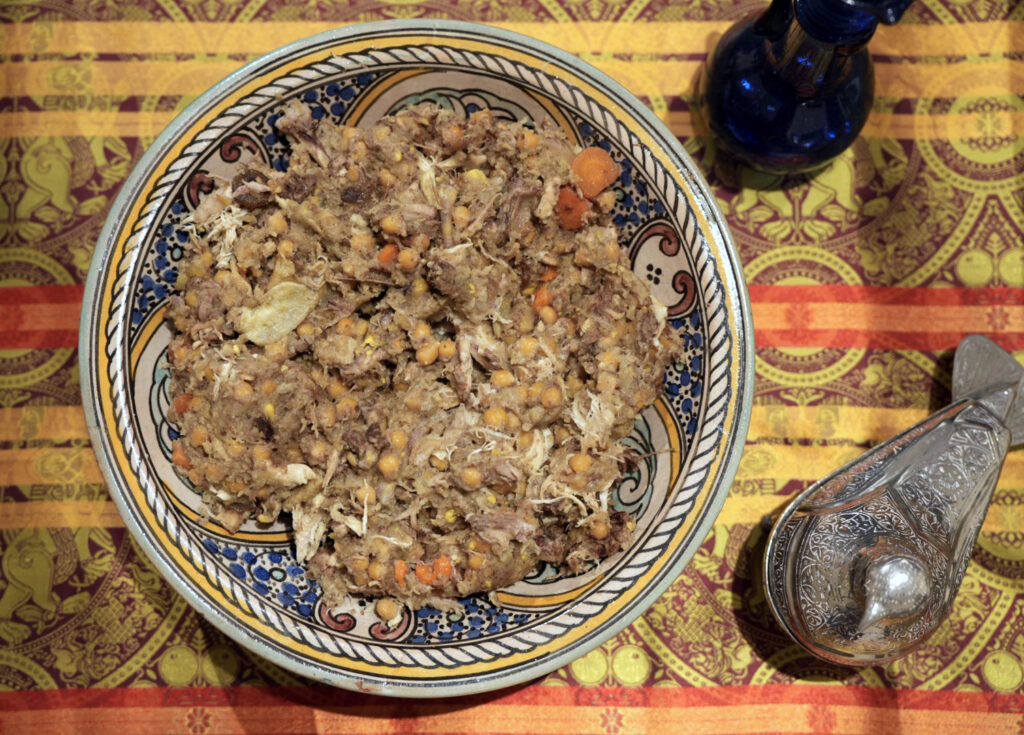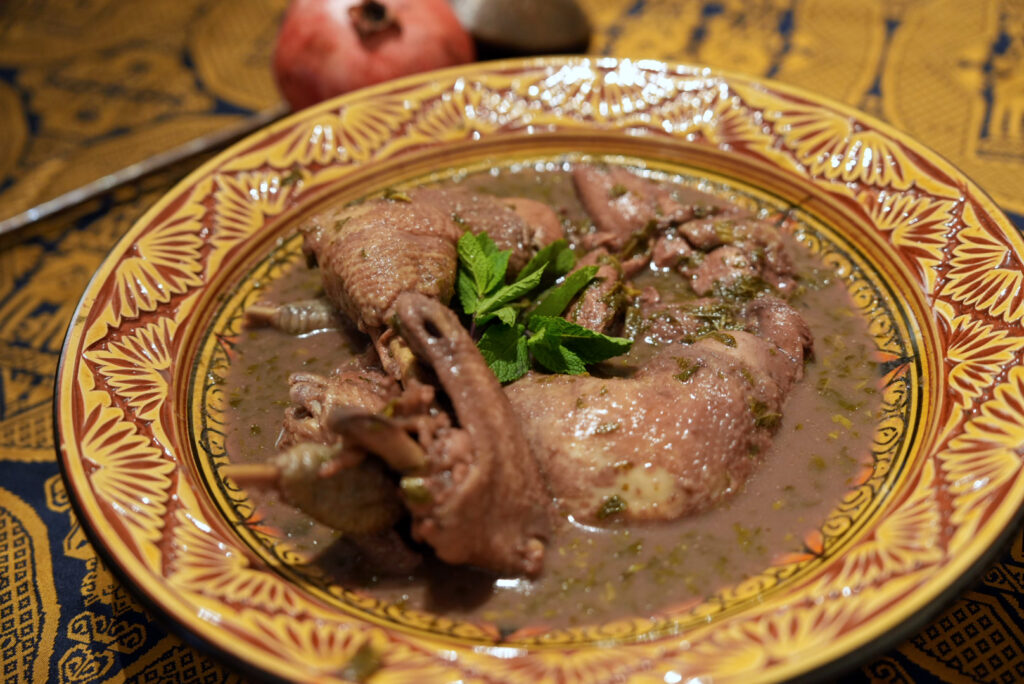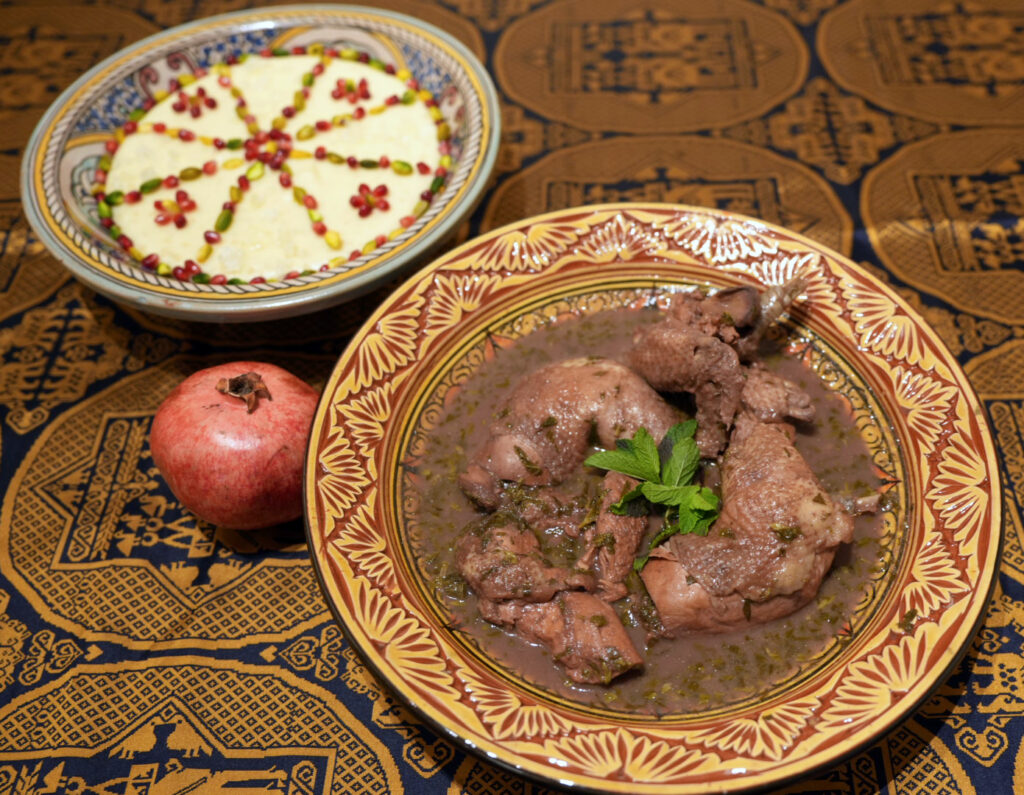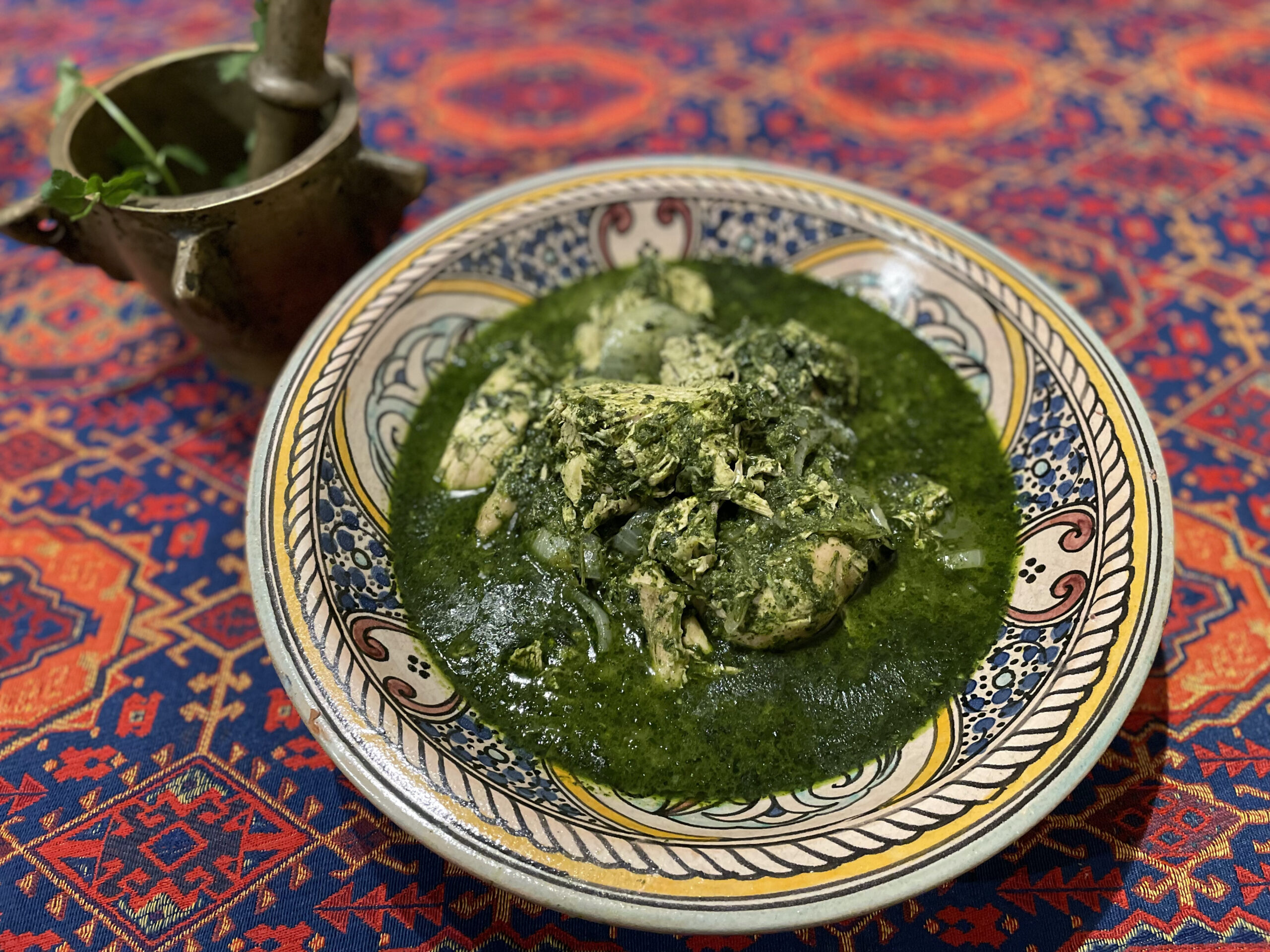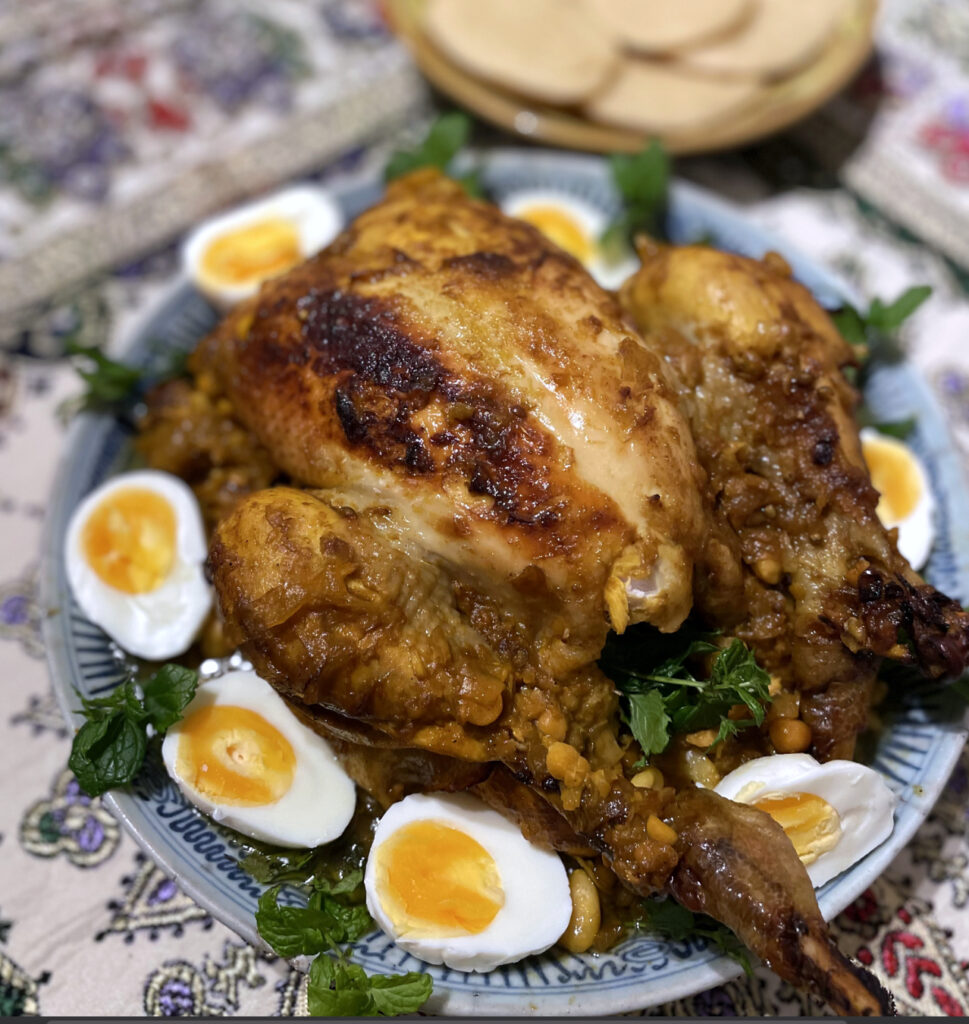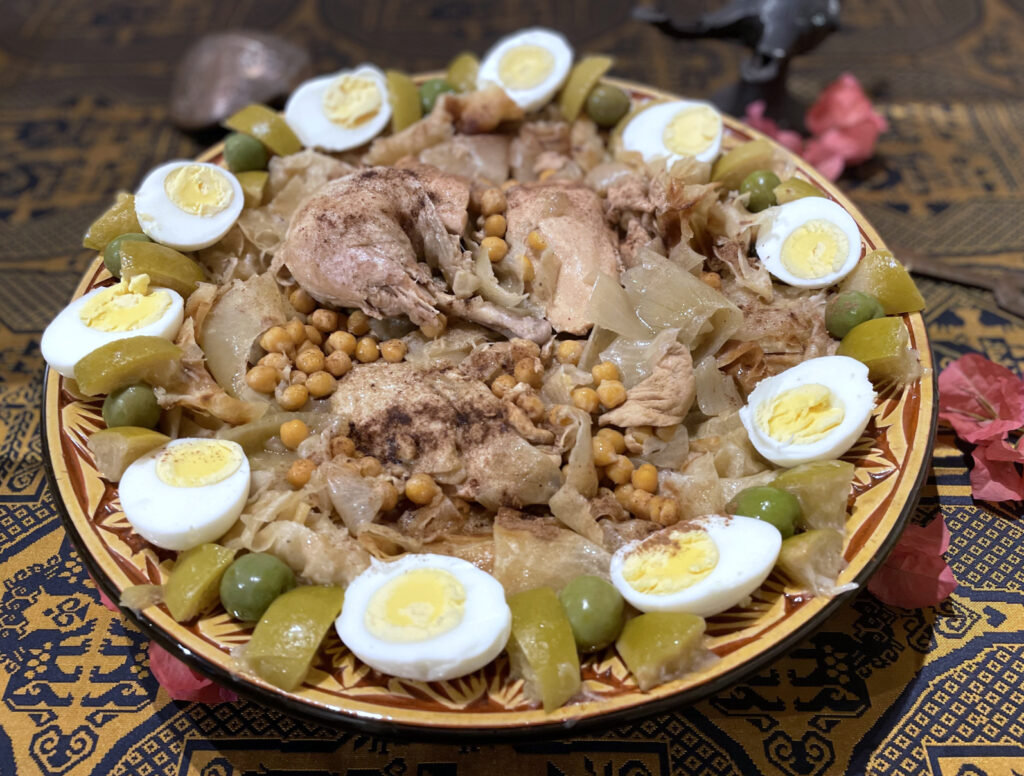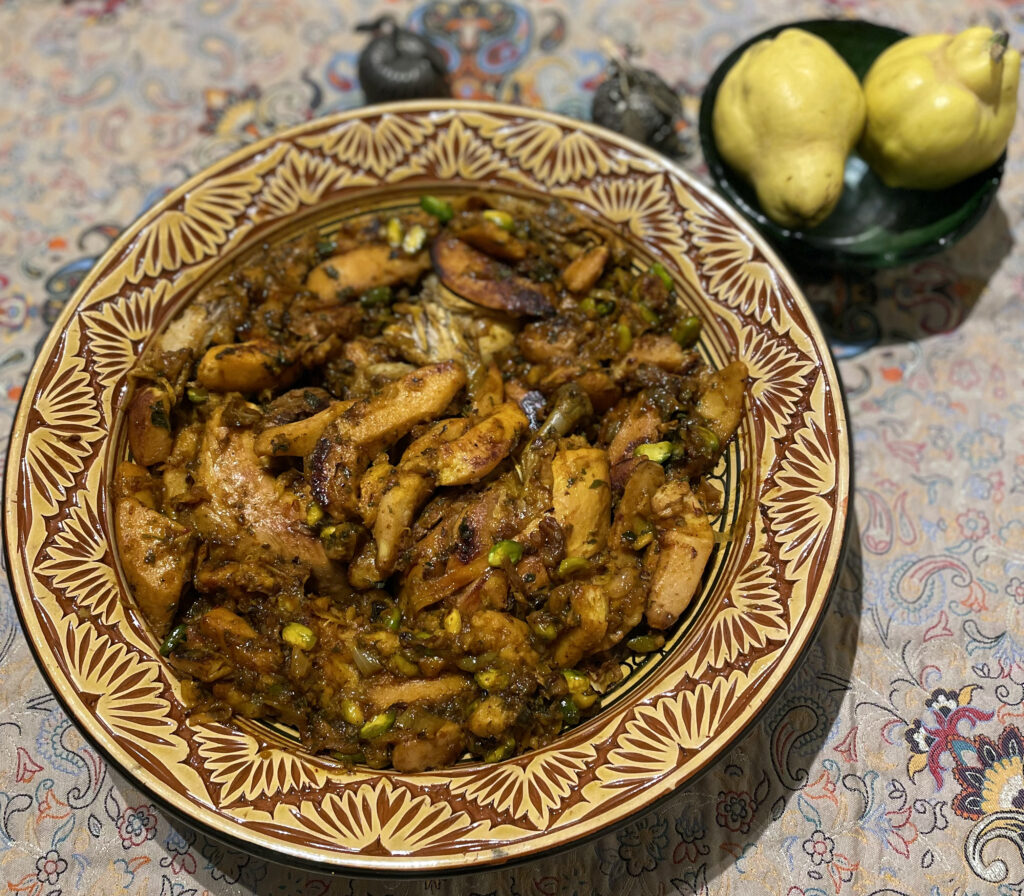We are still in the sour (Seville) orange season and what better way to use them than in this recreation of a wonderful recipe from a 13th-century text compiled in Aleppo for a stuffed chicken with sour oranges, parsley, pistachios, pepper, coriander, caraway, mint, rue, salt and sugar. The recipe comes in a number of variations and can also be made with lemon juice or verjuice (sour grape juice). Though our modern sweet orange was not around in that period, it is an obvious — and tasty — substitute in case you don’t have any sour oranges to hand. But there’s more… You should leave a bit of the stuffing aside and then mix it with some chicken broth and lemon juice into a tangy dip for that tender roasted chicken!
